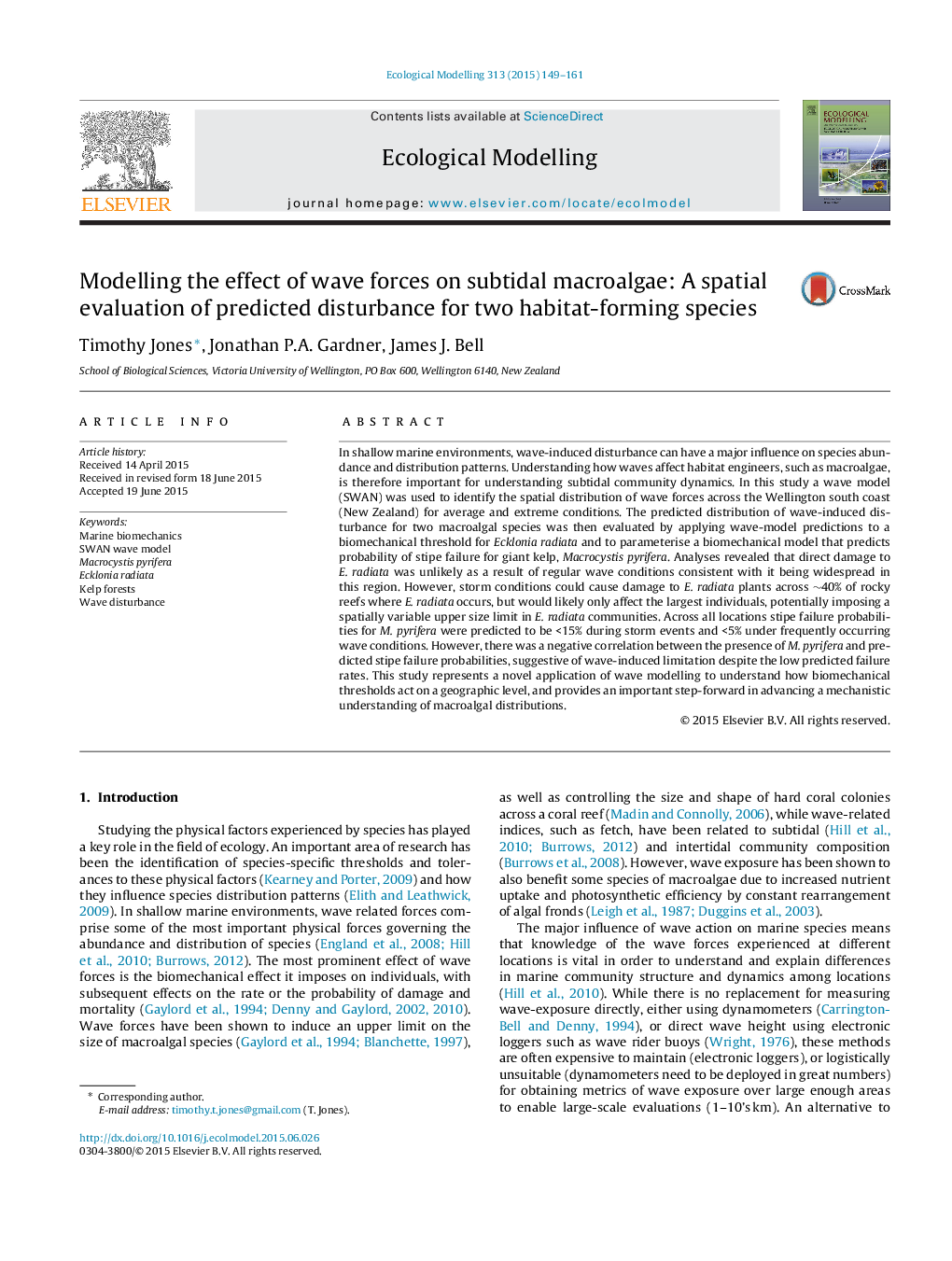| Article ID | Journal | Published Year | Pages | File Type |
|---|---|---|---|---|
| 6296604 | Ecological Modelling | 2015 | 13 Pages |
Abstract
In shallow marine environments, wave-induced disturbance can have a major influence on species abundance and distribution patterns. Understanding how waves affect habitat engineers, such as macroalgae, is therefore important for understanding subtidal community dynamics. In this study a wave model (SWAN) was used to identify the spatial distribution of wave forces across the Wellington south coast (New Zealand) for average and extreme conditions. The predicted distribution of wave-induced disturbance for two macroalgal species was then evaluated by applying wave-model predictions to a biomechanical threshold for Ecklonia radiata and to parameterise a biomechanical model that predicts probability of stipe failure for giant kelp, Macrocystis pyrifera. Analyses revealed that direct damage to E. radiata was unlikely as a result of regular wave conditions consistent with it being widespread in this region. However, storm conditions could cause damage to E. radiata plants across â¼40% of rocky reefs where E. radiata occurs, but would likely only affect the largest individuals, potentially imposing a spatially variable upper size limit in E. radiata communities. Across all locations stipe failure probabilities for M. pyrifera were predicted to be <15% during storm events and <5% under frequently occurring wave conditions. However, there was a negative correlation between the presence of M. pyrifera and predicted stipe failure probabilities, suggestive of wave-induced limitation despite the low predicted failure rates. This study represents a novel application of wave modelling to understand how biomechanical thresholds act on a geographic level, and provides an important step-forward in advancing a mechanistic understanding of macroalgal distributions.
Related Topics
Life Sciences
Agricultural and Biological Sciences
Ecology, Evolution, Behavior and Systematics
Authors
Timothy Jones, Jonathan P.A. Gardner, James J. Bell,
